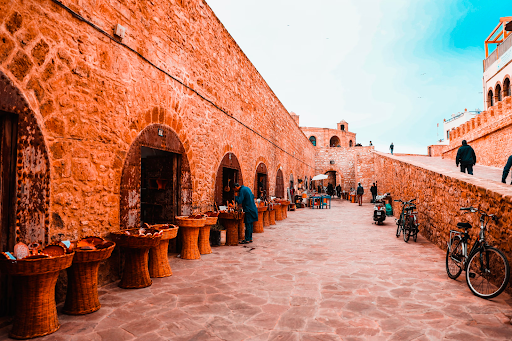
36 facts about the German landmark Brandenburg Gate you probably didn’t know about Brandenburg Gate Facts
German landmark Brandenburg Gate Short Intro
It is situated in the western region of the city center located in the west of Berlin within Mitte. It is located at the intersection between Unter den Linden and Ebertstrasse, directly west of Pariser Platz. A block to the northwest is the Reichstag building which hosts Berlin’s German Parliament (Bundestag). It is also the grand entrance to Unter den Linden, a boulevard of linden trees that took you directly into the monarchs’ palace. City Palace of the Prussian monarchs.
Hollywood Movie Deadpool 2 Plot Summary Reviews Actors Quotes 2018
You Should Know facts about the German landmark Brandenburg Gate.
Throughout its entire existence, Brandenburg Gate was often a location for important historical events. It is seen as not just an emblem of the turbulent time of Europe and Germany but a symbol of European peace and unity.
German landmark Brandenburg Gate Facts List
- The Gate symbolized freedom.
- From 2000 to 2002, that’s the year that the Gate was rebuilt through Berliner’s Foundation for the Protection of Monuments and cost 6 million euros.
- Brandenburg Gate is a very historical building, and when someone hears about it, he wishes to visit it.
- The design was redesigned by Karl Friedrich Schinkel for the new function for its role as the Brandenburg Gate as a Prussian triumphal arch.
- She, who is now Victoria, was outfitted with the Prussian Eagle and the Iron Cross on her lance along with an oak wreath.
- It was authorized by Friedrich Wilhelm II in 1791.
- The quadriga faces the east like it was at the time it was first installed in 1793. Only the Royal family members were allowed to walk by the central archway along with people belonging to the Pfuel family from 1814 until 1919.
- The Kaiser presented this award to the family in remembrance of Ernst von Pfuel, who was responsible for bringing the quadriga to the highest point of the Gate.
- Additionally, ambassadors’ coaches utilized this archway in the middle to present their letters of credence.
- The presentation of their certificates of credibility to the council. View across Pariser Platz, June 1945Bernard Montgomery, Soviet marshals Georgy Zhukov and Konstantin Rokossovsky departed from Brandenburg Gate on July 12th, 1945.
- Brandenburg Gate on July 12th, 1945, having been adorned by Montgomery.
- The Nazis were in power when they gained control; they made the Gate an emblem of their party.
- The Gate was able to survive World War II and was one of the damaged structures remaining among the Pariser Platz ruins in 1945 (another one being an Academy of Fine Arts).
- The Gate was also used as a sign of celebration.
- The Propylaeum of Athens’ Acropolis – that’s the Gate that was modeled upon.
- This Gate marks the grand entrance into Unter den Linden, a boulevard lined with linden trees that took you directly towards the Royal City Palace of the Prussian monarchs.
- Through its entire existence in the past, Brandenburg Gate was often a place for significant historical events.
- Today, it is seen as an icon of the turbulent time of Europe and Germany and Europe and European peace and unity.
- Following the battle of 1806, Prussian defeat in the Battle of Jena-Auerstedt Napoleon is the one person to utilize the Brandenburg Gate for a triumphal procession. He also took the quadriga up to Paris.
- After the defeat of Napoleon’s army in 1814 and following the Prussian invasion of Paris by General Ernst von Pfuel, the quadriga was brought back to Berlin.
- The two American presidents have visited Brandenburg.
- 130,000 is the total number of people gathered at the Gate after the attack at an Orlando gay bar in 2016.
- The Gate was lit with rainbow colors to honor those who were killed.
- The luxurious Adlon Hotel and The French, as well as the US embassies, are the structures that protect the Gate in its prime position in Pariser Platz, otherwise known as Berlin’s “Gute Stube” (“best room”).
- Numerous celebrations have taken place several times at Brandenburg Gate.
- The Gate was severely damaged by cracks in the column due to blasts from nearby explosives and bullets. The head of one horse in the original quadriga escaped and is currently at the Markisches Museum.
- The attempts to hide the district’s capital of Berlin and to confuse Allied bombers included the building of an exact replica of the Brandenburg Gate located away from the city’s center.
- Following the surrender of Germany and the ending of the war, both the government of East Berlin and West Berlin rebuilt it as a collective effort.
- The Gate was shut for more than three decades.
- Brandenburg Gate Brandenburg Gate is one of the original eighteen gates built by Berlin Zoll and Akzisemauer. Berliner Zoll und Akzisemauer.
- The Gate was inside the Soviet occupation zone, right close to the border with the British occupation zone, later becoming the boundary to East Berlin and West Berlin.
- The Brandenburg Gate was seen from Unter den Linden in East Berlin in July of 1981.
- The pedestrians and vehicles could move in peace through the Gate until construction started on the Berlin Wall on Barbed Wire Sunday, August 13th, 1961.
- West Berliners gathered on the west border of the entrance in protest in opposition to protests against the Berlin Wall, West Berlin’s mayor Willy Brandt, who had returned from an election-related campaign trip in West Germany earlier the same day.
- The wall ran directly through the west side of the Gate and was kept closed for the entire Berlin Wall period, completed on December 22nd in 1989.
- The Brandenburg Gate is a symbol of the unity of Berlin.








